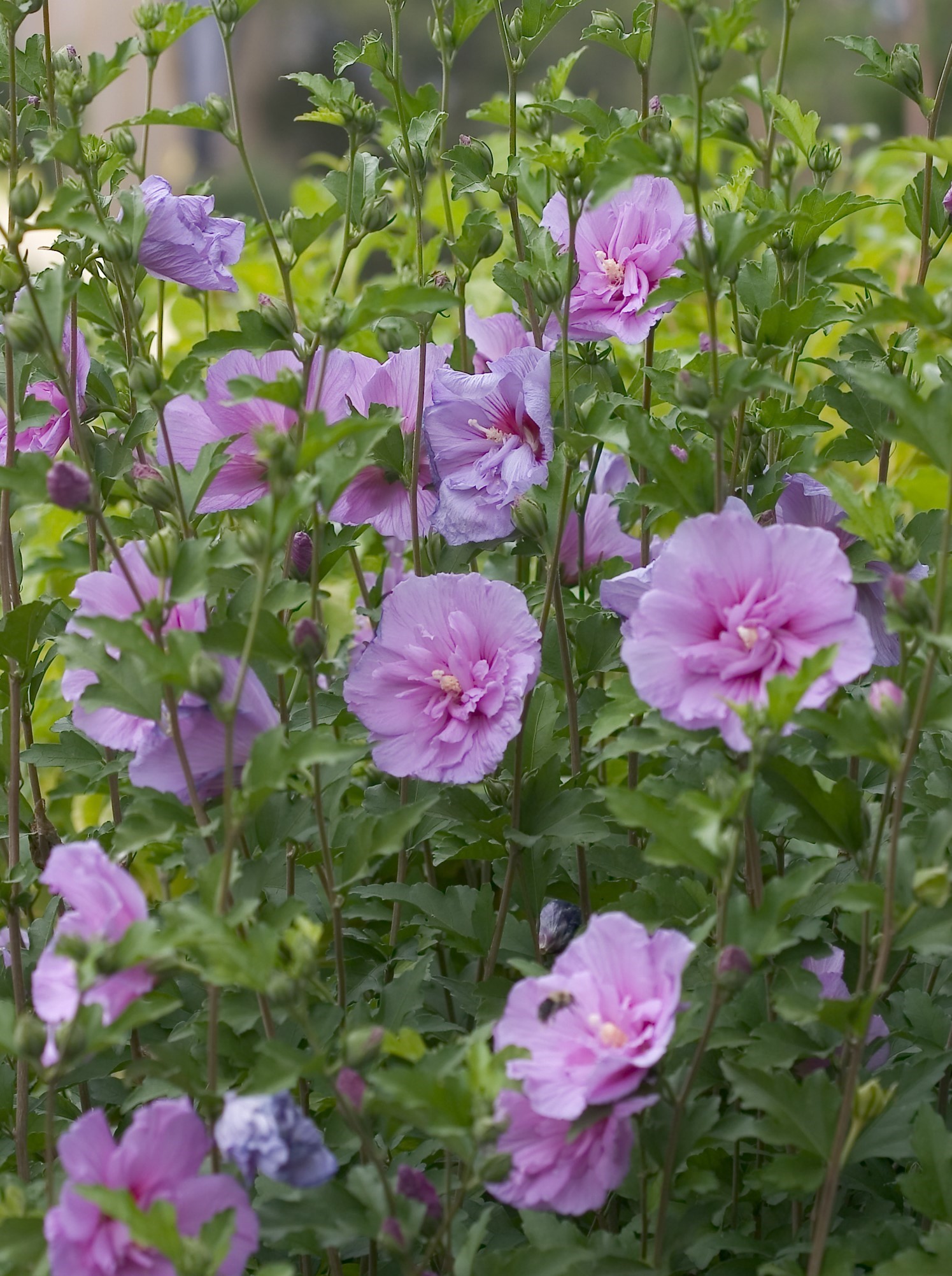Rose Of Sharon: Expert Guide To Planting & Care
What if you could have a burst of color in your garden from midsummer all the way into fall, with minimal effort? The Rose of Sharon, a versatile shrub known for its vibrant blooms and adaptability, offers precisely that, making it a captivating addition to any landscape.
The Rose of Sharon, scientifically known as Hibiscus syriacus, has graced gardens for centuries, celebrated for its resilience and the showy display of flowers it provides. This deciduous shrub, originating from Asia, has become a favorite among gardening enthusiasts worldwide. Its ability to thrive in various climates and soil conditions, coupled with its late-summer blooming season, drought tolerance, and low-maintenance nature, solidifies its appeal. Whether you're a seasoned gardener or just starting, the Rose of Sharon offers a rewarding experience, bringing beauty and ease to your outdoor space.
| Common Name | Rose of Sharon, Shrub Althea, Syrian Ketmia |
| Scientific Name | Hibiscus syriacus |
| Family | Malvaceae (Mallow Family) |
| Origin | East Asia |
| Type | Deciduous Shrub or Small Tree |
| Size | Typically 8-12 feet tall and 6-10 feet wide, but can vary depending on cultivar and pruning. |
| Bloom Time | Midsummer to Fall |
| Flower Colors | Various, including white, pink, purple, red, and lavender, often with contrasting centers. |
| Sunlight Needs | Full sun to partial afternoon shade |
| Soil Requirements | Well-draining soil; adapts to most soil conditions except extremely wet or dry. |
| Hardiness Zones | Typically USDA zones 5-9, though this can vary. |
| Key Features | Showy blooms, late-season interest, drought tolerance, low maintenance. |
For further information, please visit: Gardenia.net - Rose of Sharon
The Rose of Sharons versatility extends to its aesthetic appeal. The flowers, often boasting five large petals with a contrasting center, appear in a spectrum of colors. You can find blooms in shades of white, pink, purple, red, and lavender. The most common variety features white flowers with a deep burgundy center. This diverse palette allows you to integrate the plant seamlessly into various garden designs, enhancing the overall visual impact.
Understanding the environment in which a Rose of Sharon thrives is key to its successful cultivation. Full sun to partial afternoon shade is generally ideal. The amount of sunlight directly affects the number of blooms the plant will produce. An area with good air circulation promotes the best flowers and strongest stems while minimizing the risk of disease. Pruning is essential for maintaining the desired shape and promoting flowering. The best time for larger pruning tasks is in late winter or early spring, before new growth begins. This ensures that the plant can focus its energy on producing vibrant blooms during the growing season. Be careful and keep an eye out for hot conditions, which may affect the plant and its environment.
When selecting a Rose of Sharon, consider the many cultivars available. Proven Winners ColorChoice shrubs are trialed and tested by experts for an average of 6 to 10 years. These tests help ensure that the selected varieties outperform conventional ones. The aim is to find varieties with clearer, brighter flower colors, graceful habits, low to no seed set (to minimize unwanted spread), and attractive foliage. This selection process guarantees youll find a plant thats not only beautiful but also easy to care for.
When it comes to planting and care, the Rose of Sharon is relatively undemanding. The plants can be planted in spring or fall, provided there is no danger of frost. Choose a location that offers well-draining soil. While the plant adapts to various soil conditions, it prefers those that are not excessively wet or dry. Once youve selected the perfect spot, dig a hole and add some fertilizer to the soil. This will give your Rose of Sharon a boost, supporting its healthy growth and abundant flowering. Water the plant well after planting to help the roots settle. Rose of Sharon can survive short droughts, but regular watering is recommended, especially during dry spells. If you notice yellowing leaves, this could indicate that the plant needs more water. Applying fertilizer is also recommended if you want to have a stunning plant.
While generally a low-maintenance plant, Rose of Sharon can be susceptible to certain pests and diseases. Keeping an eye out for these and addressing them promptly is crucial. The plant is considered invasive in some eastern states. This is why choosing sterile cultivars (those that do not produce seeds) is often recommended to prevent unwanted spread. You can also prune them to prevent seed pod development.
The history and lore of the Rose of Sharon add another layer of fascination. The name itself is a biblical expression, its origin and meaning still debated. Some theories suggest it refers to a crocus, a tulip, a lily, or a coastal lily. The plants association with biblical times and the enduring symbolism of beauty, resilience, and endurance enhance its appeal. The Rose of Sharon has also found uses in skincare, as its advantageous characteristics nourish skin and hair. It is utilized in hair and skincare products to help relax and soothe.
Whether you're aiming to create a stunning focal point or add a splash of late-season color, the Rose of Sharon is a versatile and rewarding choice. With a wide range of varieties available, simple care requirements, and a rich history, the Rose of Sharon brings beauty and joy to gardens of all types. Whether you are a beginner or a seasoned gardener, Rose of Sharon is a great choice for you, a showy shrub with colorful flowers.

:max_bytes(150000):strip_icc()/macro-of-flawless-blue-rose-of-sharon-with-red-eye-618456398-b3bb3f61a28648f4b0419ba9bfad3628.jpg)

